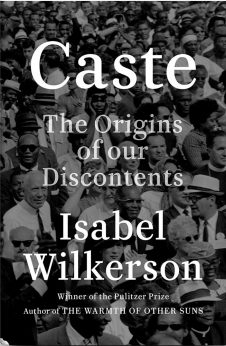
One evening decades ago, fresh from milking the cows on my family’s farm in Sequim, Wash., my mother handed me a slim booklet. “You might find this interesting,” she said quietly. It was The Communist Manifesto, and I read it cover to cover. I was 13 years old. I even nodded in agreement when the Manifesto praised the bourgeoisie for rescuing millions of peasants from the “idiocy of rural life.” It seemed idiotic to me that we milked the cows every night and woke up the next morning at 5 a.m. and milked them again. A while later my mother gave me another book, The World and Africa, by Dr. W.E.B. DuBois. Again, I read it cover to cover, learning that an estimated 60 million Africans died after being captured and transported on sweltering, reeking slave ships to the United States.
These books, and many others, gave me a good grounding in the history of class struggle, the roots of class, race, and gender oppression. A few weeks ago, a friend, not unlike my mother, lent me her copy of Isabel Wilkerson’s gripping book, Caste: The Origins of Our Discontents. Wilkerson describes the ironclad shackles of white supremacy in the United States, a seemingly inescapable reality in which the “dominant” white caste exercises a ruthless, yet often subtle power over African Americans, locking them below the lowest rung in American society—our version of the Dalits of India, the “Untouchables.”
Wilkerson is a skilled storyteller and her book tells one story after another of racist oppression, so vivid that those in the dominant caste should hang their heads in shame. She tells the familiar story of Satchel Paige, possibly the greatest baseball pitcher, ever, blocked from playing in baseball’s major leagues by racist segregation.
She tells of the white ruling elite in Prince Edward County, Virginia, closing down their entire public school system rather than comply with the Supreme Court’s ruling in Brown v. Board of Education. Under the sway of the racist caste system, Virginia’s white ruling elite appropriated tax revenues to bankroll all-white private schools. It meant, of course, that African American taxpayers were helping sustain schools their own children were barred from attending.
In one case retold in the book, an African American man was indicted for the murder of a white woman. He was on his way to the gallows, facing trial by a racist prosecutor, a racist judge, and an all-white jury. Then the case fell apart when proof surfaced that it was the woman’s white husband who had murdered her. She cites cases—seemingly endless—of white police officers murdering African Americans. It includes the case of Freddie Gray, locked in the back of a paddy wagon by police officers, his hands cuffed behind his back, then taken for a “joy ride” in which the driver swerved back and forth at high speed knowing that Gray, not secured with seat belts, would sustain lethal injuries crashing from one side to the other. All the officers in this brazen murder were exonerated.
Wilkerson even includes stories about her own experience with the caste system. A respected New York Times staff reporter, an African American woman, she was interviewing white businessmen in Chicago. One merchant arrived late. He refused to believe she was who she said she was even when she produced NYT credentials. This was a man so steeped in white supremacy that he refused to give her the interview. It was the American caste system on full display.
She proves that the caste system imposes costs not only on those on the bottom rung; it also is very expensive for those at the top of the ladder. Yes, Satchel Paige lost a chance to play in the majors during his prime years, but the baseball industry lost millions of dollars in profits from barring Paige from the pitchers’ mound.
One telling point Wilkerson makes about caste is that the system makes adjustments to the changes forced by the movements for racial equality. It seems to yield to pressure but resurfaces in a new form, the basic caste structure unchanged, the “dominant” white caste still at the top. And the racists in the ruling elite never cease in their schemes to roll back the gains, push Black people back into servitude, even outright slavery if they could. Many of her stories of vicious oppression, including lynching, she brings into sharp juxtaposition with the white supremacists at large today, notably Donald Trump. She is powerful when she recounts genocide by the Nazis against the Jews and in the next sentence reminds us of Minneapolis police officer Derek Chauvin’s murder, in plain sight, of George Floyd.
 Yet something is missing from Wilkerson’s book. As I read one anecdote after another, I said to myself: “Where is the fightback?” She mentions the Scottsboro case, eight young Black men framed up on rape charges in Alabama, facing execution. She says only that the white women “recanted” their story about being raped. Nothing about the mass movement, worldwide, to save their lives. She speaks of genocide but does not mention that Paul Robeson and William L. Patterson delivered the Civil Rights Congress We Charge Genocide petition to the United Nations in 1951.
Yet something is missing from Wilkerson’s book. As I read one anecdote after another, I said to myself: “Where is the fightback?” She mentions the Scottsboro case, eight young Black men framed up on rape charges in Alabama, facing execution. She says only that the white women “recanted” their story about being raped. Nothing about the mass movement, worldwide, to save their lives. She speaks of genocide but does not mention that Paul Robeson and William L. Patterson delivered the Civil Rights Congress We Charge Genocide petition to the United Nations in 1951.
Fightback began the instant slavery began—the rebellions of Nat Turner and Denmark Vesey. The Abolitionists mobilized millions of people, the first great multiracial movement in U.S. history, to abolish chattel slavery. African Americans, Latinos, Native American Indians, Asian Americans, and European Americans have joined in multiracial unity against white supremacy.
Wilkerson makes no mention of Karl Marx and Friedrich Engels, who corresponded with President Abraham Lincoln during the U.S. Civil War. The International Workingmen’s Association under the leadership of Marx and Engels played a major role in mobilizing against schemes by England’s capitalists to form an alliance with the Confederacy. Lincoln was deeply grateful that this movement was successful. Marx wrote that “Labor in the white skin will never be free as long as labor in the black skin is branded.”
Wilkerson does repeatedly quote Dr. W.E.B. DuBois, who joined the Communist Party USA in 1961, but she barely mentions “class”—and when she does, gets it only half right. “It is the fixed nature of caste that distinguishes it from class,” she writes (page 106). “Class is an altogether separate measure of one’s standing in a society, marked by a level of education, income, and occupation as well as the attendant…accent, taste, and manners that flow from socioeconomic status. These can be acquired through hard work and ingenuity or lost through poor decisions or a calamity….”
It is Horatio Alger malarkey that poor and working-class people can get ahead if they just work hard, union-free, accept whatever crap the corporate Brahmins dole out. For every worker who rises from humble origins into the capitalist class, hundreds of thousands of others lose their jobs, incomes, homes, and health care and fall into the growing ranks of the poor—“social mobility” in reverse.
This lack of a class orientation means that Wilkerson is silent on the main engine that drives racist oppression—super exploitation, the squeezing of tens of billions of dollars in excess profits from the labor of African Americans. The great Marxist economist Victor Perlo wrote books quantifying these “superprofits.” He proved that yes, Black workers suffered the most in stolen income because of the systemic wage differential between white and Black workers. Yet white workers too paid in lost wages. Why? Because racism is used to divide workers against each other. He pointed out that in the nearly “union-free” deep South, the wages of both white and Black workers were far lower than for Black and white workers in the North, where unions are stronger, just as strong as their conscious rejection of racism.
I think Wilkerson is playing devil’s advocate. Yes, we can see the victories that move us closer to Dr. Martin Luther King’s “Beloved Community.” But Wilkerson’s book sounds a clear, loud warning that the racist ruling elite is alive and well, staging insurrections at the U.S. Capitol, murdering unarmed African Americans, stripping millions of African Americans, Latinos, and other people of their right to vote. Her book is a “must read.”
Caste: The Origins of Our Discontents
By Isabel Wilkerson
Random House, 2020, 496 pp.










